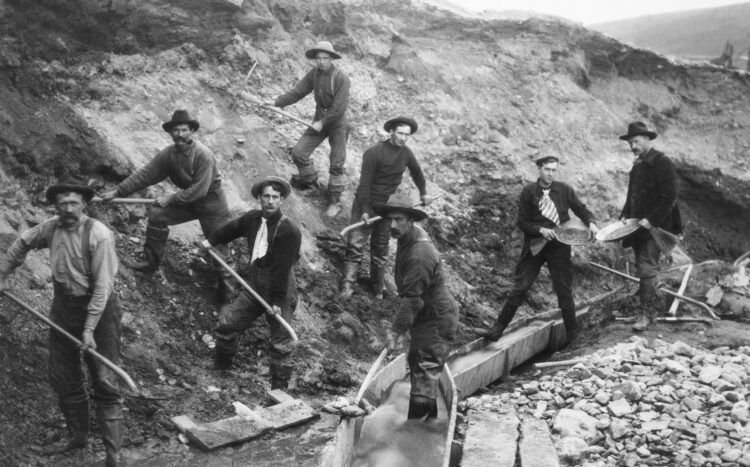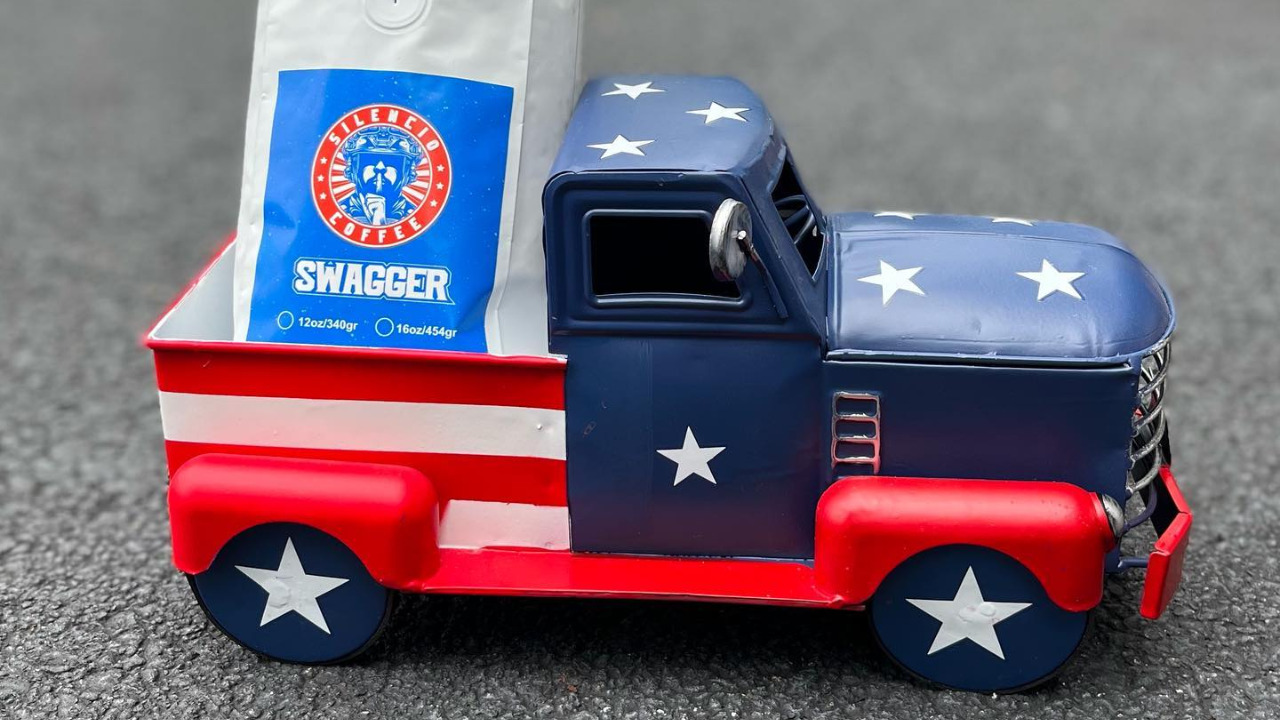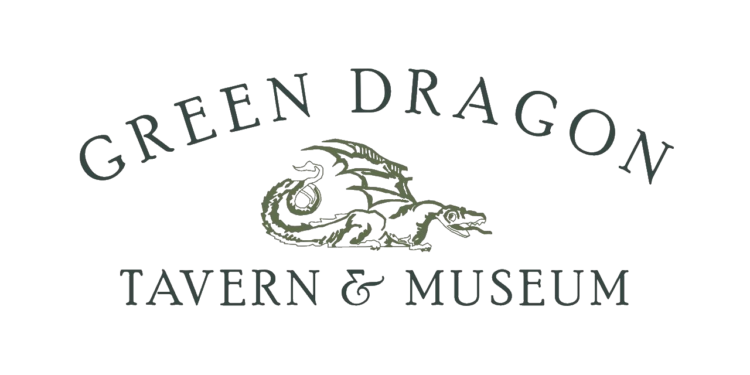Coffee made its debut in North America during the colonial era. The British, Dutch, and French brought the beverage to the New World, introducing it to their colonies. By the mid-1700s, coffeehouses began to spring up in major cities like Boston, New York, and Philadelphia, serving as gathering places for merchants, intellectuals, and revolutionaries. These coffeehouses became hotbeds for political discussions and played a significant role in shaping early American society. During the American Revolutionary War, coffee gained even greater popularity as the colonists sought alternatives to tea, which had become a symbol of British oppression. The Boston Tea Party in 1773 further propelled coffee into the spotlight, solidifying its status as the patriotic beverage of choice.
Coffee Houses that made history
In Boston, coffeehouses such as the Green Dragon Tavern and the King’s Arms gained prominence as meeting places for revolutionaries. These establishments became forums for discussions that fueled the revolutionary spirit. Figures like Paul Revere, Samuel Adams, and John Hancock were known to frequent these coffeehouses, solidifying their significance in the struggle for independence. In New York, coffeehouses like Fraunces Tavern and the Merchants’ Coffee House became pivotal in the exchange of information and ideas. Fraunces Tavern, in particular, served as a headquarters for the Sons of Liberty and hosted crucial meetings, including George Washington’s farewell to his officers at the end of the Revolutionary War. Philadelphia, known as the intellectual and political hub of the colonies, was home to renowned coffeehouses such as the London Coffee House and the City Tavern. These establishments provided a platform for influential figures like Benjamin Franklin and Thomas Jefferson to engage in discourse that shaped the principles and ideals of the newly forming nation.
The Gold Rush and The Civil War
The Gold Rush of the mid-1800s brought waves of prospectors to California in search of newfound wealth. These rugged adventurers faced arduous journeys, harsh living conditions, and long hours of labor. Coffee quickly became a staple among the miners, providing them with much-needed energy and a sense of comfort. Coffee’s convenience and ability to be easily brewed over a campfire made it the ideal beverage for the gold miners. A hot cup of coffee in the morning and throughout the day provided a familiar taste and a boost of caffeine to help sustain their demanding work. Coffee became a valuable commodity, often traded at high prices, as miners recognized its significance in their daily lives.
As the nation grappled with the Civil War, coffee played a vital role in sustaining the soldiers on both sides of the conflict. The war brought unprecedented challenges, from marching long distances to enduring harsh camp conditions. Coffee became an indispensable part of the soldiers’ rations, providing warmth, comfort, and a momentary respite from the harsh realities of war. Coffee was included in the Union Army’s rations, with soldiers receiving a daily allowance of beans, which they would grind and brew over campfires. In the Confederate Army, coffee was more scarce, and soldiers often relied on alternative ingredients such as chicory or roasted corn to create coffee substitutes.

Sometimes the commonest things are special, like a cup of black coffee. Socrates was a hoplite you know.~Michael Kurcina
World War I, with its unprecedented scale and devastation, brought profound changes to the global landscape. Amidst the chaos and despair, coffee played a significant role in providing solace, energy, and a semblance of normalcy for soldiers on the front lines. Supplying coffee to troops during World War I presented significant challenges. The scale of the conflict, coupled with disrupted trade routes and limited resources, made it difficult to ensure a steady and reliable supply of coffee. However, recognizing its importance for morale and the well-being of soldiers, military authorities prioritized coffee distribution and worked to overcome logistical obstacles. In the trenches, soldiers had to make do with limited resources and improvised brewing methods. Portable coffee kits were developed, consisting of small metal containers or mess tins that could be used to brew coffee over open fires or small stoves. These makeshift setups allowed soldiers to enjoy a hot cup of coffee, even in the most challenging environments. The late 19th and early 20th centuries saw significant advancements in the coffee industry. Innovations such as vacuum-sealed packaging and the invention of commercial coffee roasters allowed for greater consistency and quality in coffee production. Companies like Folgers, Maxwell House, and Hills Bros. emerged as pioneers, introducing iconic brands that still hold a prominent place on supermarket shelves today.
WW2 and Korea
During WW2, as the war intensified, governments implemented rationing systems to ensure fair distribution of essential goods. Coffee was among the items subject to rationing in several countries, including the United States and Great Britain. Rationing limited the amount of coffee available to civilians and the military, prompting the need for alternative sourcing methods. To meet the demand for coffee, military supply chains were established. These chains involved procurement agents working directly with coffee-producing countries, such as Brazil and Colombia, to secure coffee shipments for the troops. The military often relied on bulk purchases and strategic agreements to secure adequate supplies. Coffee was a vital component of field rations, providing soldiers with a much-needed dose of energy and comfort. Ration packs often included instant coffee or coffee concentrate, which could be easily prepared by adding hot water. These compact and lightweight coffee solutions were designed to withstand the rigors of military life and offer a quick caffeine boost for soldiers on the move. Commissary services, responsible for providing essential goods to military personnel, played a vital role in procuring coffee. Commissaries established connections with coffee suppliers and worked to ensure a consistent supply of coffee products for troops stationed in various locations. They also facilitated the distribution of coffee to mess halls and field kitchens.
Don’t laugh half-way or cry half-way, and when you drink coffee don’t drink it half way. Don’t waste a drop. A good man isn’t half a man. Save that for simpletons and savages.~Michael Kurcina
Many soldiers received care packages from loved ones back home, which often included coffee or instant coffee packets. These packages not only provided a physical reminder of home but also served as a morale booster, showing that people back home were thinking of and supporting the troops. The arrival of care packages, with their prized coffee contents, was eagerly anticipated and greatly appreciated. During the Vietnam War, American soldiers had interactions with the local Vietnamese population. Coffee played a role in these encounters, as Vietnamese coffee was distinct in flavor and brewing style. Soldiers had the opportunity to taste Vietnamese coffee, often served strong and sweetened with condensed milk. This cultural exchange through coffee fostered connections between soldiers and locals, offering glimpses into Vietnamese traditions and customs.
FACTS
- Coffee has earned the nickname “the soldier’s beverage” due to its longstanding association with military life. From the battlefield to the barracks, coffee has provided soldiers with a familiar and comforting drink, boosting morale and offering a brief respite from the rigors of military duty.
- Coffee has been a staple in military ration packs for centuries. These packs contain specially prepared meals and supplies for soldiers in the field. Coffee serves as a source of sustenance and a way to boost energy and morale during challenging situations.
- Coffee breaks have been an integral part of military routines. These breaks provide soldiers with a moment to regroup, recharge, and foster camaraderie. Sharing a cup of coffee often becomes a time for soldiers to relax, bond, and share stories.
- Instant coffee gained popularity during World War II as a convenient and lightweight option for soldiers. Its easy preparation and long shelf life made it an ideal choice for troops in the field. Instant coffee continues to be a common component of military ration packs.
- Soldiers have demonstrated remarkable resourcefulness when it comes to brewing coffee in the field. Using improvised equipment like mess tins, canteen cups, and field stoves, soldiers have managed to enjoy their daily cup of joe even in the most remote and challenging environments.
- Coffee has occasionally served as a form of currency among military personnel. In situations where supplies are scarce, soldiers have bartered or traded coffee for other goods or services. Its value and desirability make coffee a valuable commodity in military circles.
- The caffeine content in coffee helps to combat fatigue and increase alertness, making it an ideal companion for soldiers on duty. Whether in the midst of combat or engaging in lengthy operations, coffee provides a much-needed boost to help soldiers stay focused and attentive.
- Care packages sent to military personnel often include coffee as a way to provide comfort and remind them of home. These packages, filled with cherished items from loved ones, contribute to the overall well-being and morale of soldiers serving far from home.
- Coffeehouses have long been gathering places for soldiers, fostering a sense of community and camaraderie. These establishments, both on and off military bases, serve as meeting points for soldiers to unwind, socialize, and enjoy a cup of coffee.
- Coffee has become an enduring part of military culture, embedded in rituals and traditions. From morning brews to toasting fallen comrades, coffee symbolizes unity, resilience, and shared experiences among military personnel.
While mass-produced coffee dominated the market for decades, the latter half of the 20th century witnessed a shift towards specialty coffee. Influenced by European coffee culture and the rise of espresso-based drinks, small-scale roasters and coffee shops began to emerge, offering a focus on high-quality beans, precise brewing methods, and a more personalized coffee experience. This trend gained momentum, culminating in the third wave coffee movement, which celebrated the nuances and origins of coffee beans and promoted direct trade relationships with coffee farmers.
*The views and opinions expressed on this website are solely those of the original authors and contributors. These views and opinions do not necessarily represent those of Spotter Up Magazine, the administrative staff, and/or any/all contributors to this site.
Unveiling the Origins of Vietnamese Iced Coffee during the Vietnam War: A Brew with Rich History



